
healthiersleepmag.com Volume 5, Issue 1 | World Sleep Congress Issue Where Sleep Doctors Go to Learn from the Best Sleep and the Developing Child Brain Clinician as Advocate Five Questions with Dr. Lourdes DelRosso Promoting access to quality sleep care for all

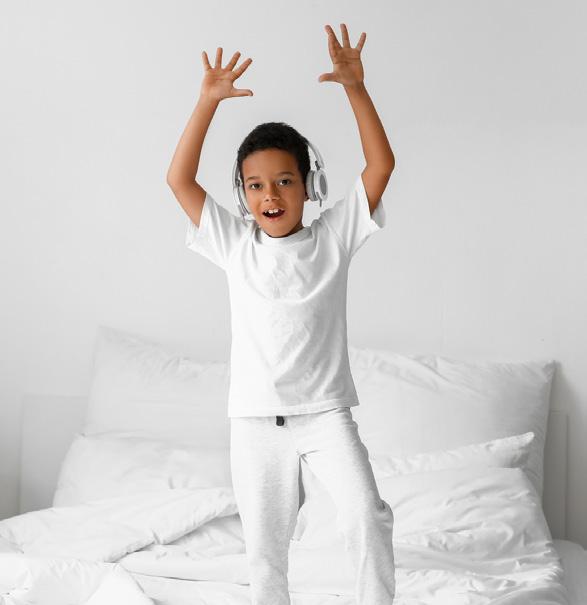
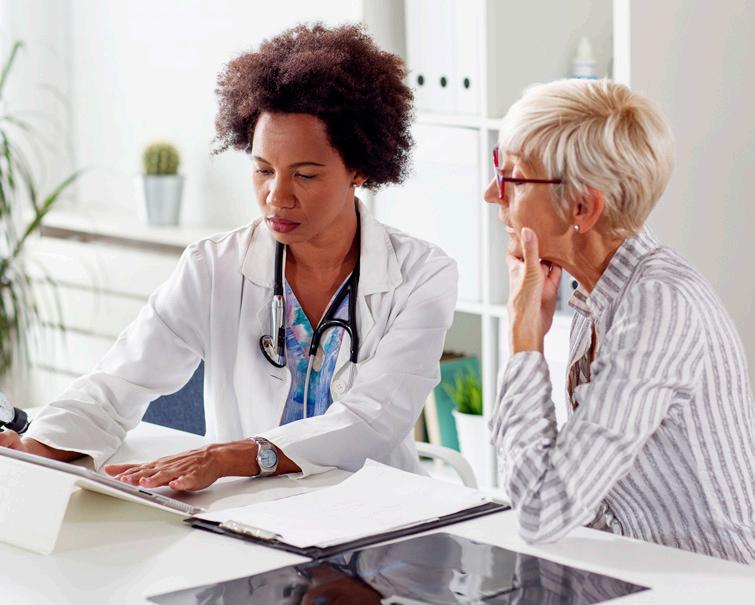
Healthier Sleep
A publication of World Sleep Society
Your Trusted Source for Improving Sleep
Publisher
World Sleep Society
Editor
Amy Larson
Copy Editor
Tyler Ringstad
Designer
Brook Lanz
Issue Reviewers
Matteo Cesari, PhD
Melissa C. Lipford, MD
Maya Ramagopal, MD
Robert J. Thomas, MD
Contributing Writers
Candace Kastanis
Maristella Lucchini, PhD
Jessica Thomas, MPH
World Sleep Society Staff
Sales Manager
healthiersleep@worldsleepsociety.org
ABOUT
For advertising or editorial contact information, email healthiersleep@worldsleepsociety.org or visit healthiersleepmag.com for current rates.
Healthier Sleep is published up to four times per year by World Sleep Society, 3270 19th Street NW, Suite 109, Rochester, MN 55901 and distributed to sleep medicine and research professionals as well as the public. No part of this publication may be reprinted or reproduced without written permission.
Healthier Sleep does not necessarily endorse the claims or content of advertising or editorial materials. All advertisements and editorial material included represents the opinions of the respective authors.
World Sleep Society/Healthier Sleep Magazine does not provide or offer medical advice. All content within the magazine, such as text, graphics, information obtained from sleep experts, and other material, is for informational purposes only. The content is not intended to be a substitute for medical diagnosis, advice or treatment. Relying on information provided by World Sleep Society and/or any of its employees, experts within the material, or other writers is solely at your own risk.
©2024 World Sleep Society. All rights reserved.


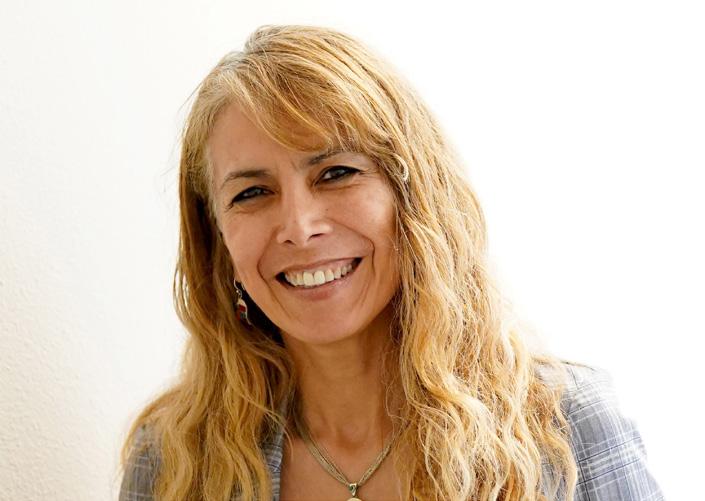
Lourdes
3 | healthiersleepmag.com CONTENTS Volume 5, Issue 1 | World Sleep Congress Issue 8 The Potential of Consumer Sleep Trackers and the technological challenges to overcome 17 Patient Organization Highlight: Circadian Sleep Disorders Network 18 How to Choose a Baby Monitor 20 Know the Risk Factors for Adolescent Insomnia 24 Sleep Deprivation in the Elderly 28 Sleep-related Jerky Movements | 4 | Where Sleep Doctors Go to Learn from the Best | 14 | Sleep and the Developing Child Brain | 12 | Five Questions with Dr. Lourdes DelRosso In Every Issue Page 22 The Latest Buzzword is Crowdlearning The BuZZZ About Sleep Bedtime Reads Page 11 Why We Should Sleep Smarter Right Now in Sleep Science Page 27 Imaging the Sleeping Brain Clinician as Advocate Page 12 Five Questions with Dr. Lourdes DelRosso Ask the Sleep Experts Page 29 Your Questions Answered By Sleep Professionals Harmony Biosciences supports the "Clinician as Advocate" series with an unrestricted educational grant.
the Cover
On
DelRosso, MD,
is a Professor of Family and Community Medicine at University California, San Fransisco, co-chairs World Sleep Day, is the Director of World Sleep Academy, and chairs the Obstructive Sleep Apnea Public Awareness Committee of the American Academy of Sleep Medicine.
PhD
Photo
credit: Cary Edmondson

Where Sleep Doctors Go to Learn from the Best
How the World Sleep Congress Advances Patient Care
By World Sleep Society Staff
octors in all specialties often travel to scientific conferences with their peers to share the new results of scientific studies, learn the latest clinical practices, and plan future projects. The process of learning never stops for doctors, and such meetings provide incredible educational opportunities.
Sleep medicine doctors and researchers especially benefit from meetings because it is a growing field in medicine. Imagine being one of only a few sleep specialists in your hometown. Attending a conference like the World Sleep congress can expand your network of peers and colleagues worldwide. Strong professional networks like this provide specialized education, peer support, and a drive for excellence that is hard to find anywhere else!
Over 3,000 people attended the 17th World Sleep congress, which was in Rio de Janeiro, Brazil over October 20–25, 2023. We asked a few attendees what they took home from the World Sleep congress.
4 | Volume 5, Issue 1 | World Sleep Congress Issue
Practical Take-Aways
The best practices in patient care to use now.
At the World Sleep Congress (WSC), I watched many lectures and learned about current research. I was always thinking about my patients: How could that (new) information help me to provide better treatment and education for a specific case, or how can my approach change for another case. Now, at the clinic, I remember daily this or that lecture or topic I watched and incorporate new evidence and information into my practice.
– Cristina Frange, PhD (Brazil)
Academic Advances
In my daily practice, attending World Sleep helped me to better organize interviews with my patients, conducting better questioning to achieve a more complete diagnosis. Providing treatment adapted to their requirements has me feeling more confident in the pathological approach. I learned that if the patient understands what ails them, is given multidisciplinary treatment, and you involve them, they will be more adherent and successful.
– Claudia Vasquez, MD (Peru)
My learning began with my flight to the congress. During the flight, the airline adjusted the light and different times of food service to provide us with the least circadian disturbance due to travel. I also realized how much eating behaviors and light could regulate sleep during a long flight and for sure in the daily life of our patients.
– Arezu Najafi, MD (Iran)
Dr. Najafi flew 18 hours and 46 minutes, covering 11,848 kilometers (7,375 miles) to attend the World Sleep congress in Rio de Janeiro!
Latest sleep research to understand potential for the future of sleep health care.
The World Sleep congress exposed me to new ways of thinking about research questions and facilitated my ability to think outside the box within my own research.
– Katie Cederberg, PhD, CPT (United
States)
I learned about pediatric sleep initiatives in other countries around the world and was able to take a more multifaceted view of the initiatives in my own country. I am now able to make better use of this knowledge in my own practice.
– Yoshinori Saito, MD (Japan)
Meeting with industry people led to knowing I could search for others who are interested in funding sleep and also comply with academic and medical standards, which could lead to future collaborations that benefit both us and our patients.
– Arezu Najafi, MD (Iran)
Attending a conference like the World Sleep congress can expand your network of peers and colleagues worldwide.

5 | healthiersleepmag.com World Sleep congress continued on page 6 >
Pictured left to right: Saito, Najafi, Frange, and Vasquez at World Sleep 2023 in Rio de Janeiro.
World Sleep congress continued from page 5
Expert Collaborations
International networking and planning for the future.
Networking at the World Sleep congress helped me expand my research collaborations and I already have new ongoing research projects with these new, international collaborations.
– Katie Cederberg, PhD, CPT (United States)
Connections made created new inspiration for research approaches, projects, and collaborations. Talking to peers also helped me reflect on my current work and goals.
– Pien Fenneke Bosschieter, MD, PhD (Netherlands)
The World Sleep congress allows you to establish contacts with professionals with extensive experience who help you decipher some pathologies that are difficult to diagnose or manage.
–
Claudia Vasquez, MD (Peru)
The World Sleep Community Is Growing
As you can see from our attendees, the World Sleep congress is an exciting international meeting. The World Sleep congress travels around the globe, happening once every two years in a different location. At each location, World Sleep Society partners with a local sleep society to organize the congress. In Rio de Janeiro, we partnered with the Brazilian Sleep Association.
So where is the World Sleep congress going in 2025? Singapore! The Asian Society of Sleep Medicine will be the host society. As this international community continues to grow, patients in places from Seattle, United States to Tbilisi, Georgia and Kuala Lumpur, Malaysia will benefit from better connected and more informed sleep professionals.
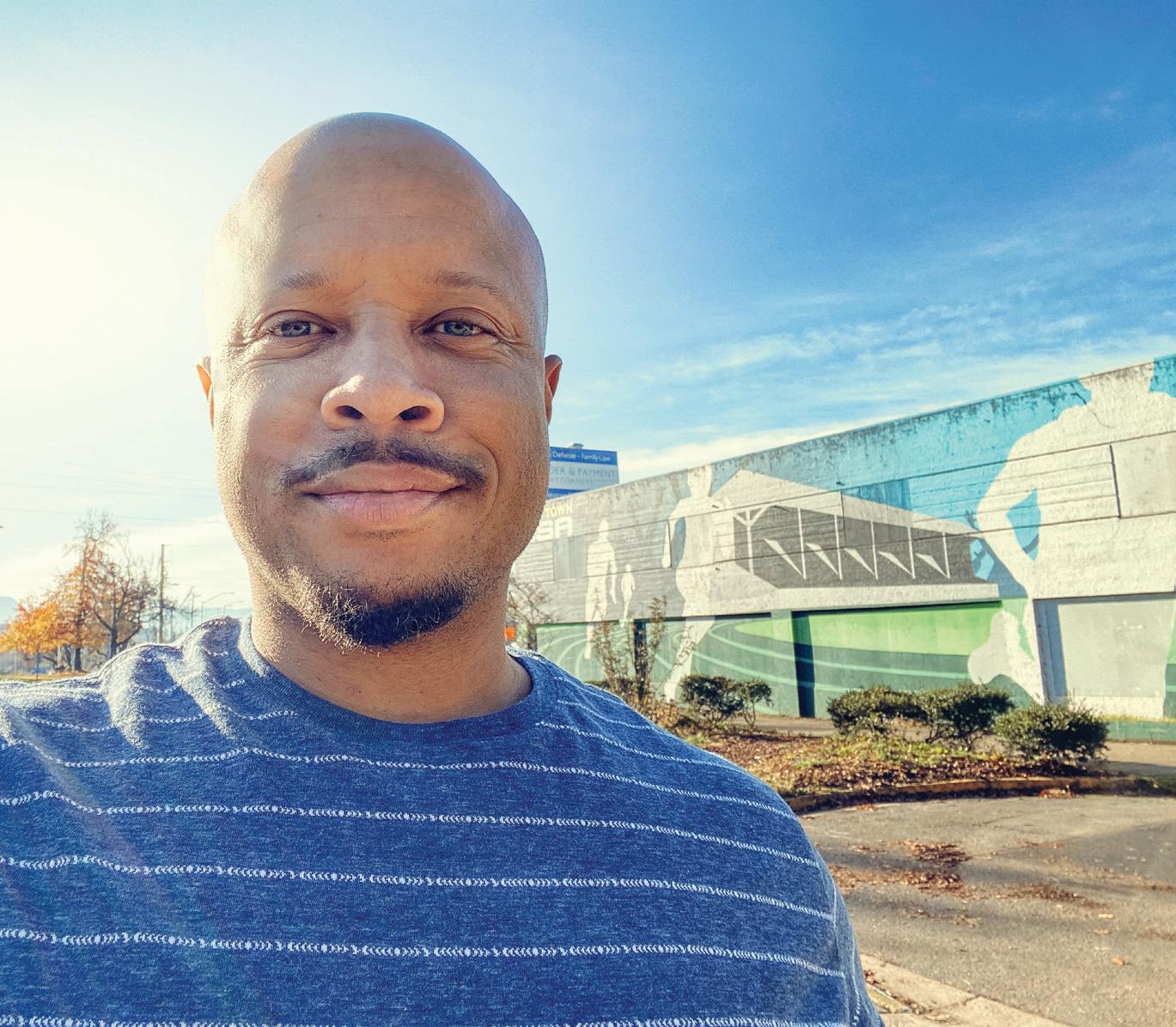
6 | Volume 5, Issue 1 | World Sleep Congress Issue
Know Narcolepsy is a registered trademark of Harmony Biosciences. Harmony Biosciences name and logo are registered trademarks. © 2022 Harmony Biosciences. All rights reserved. US-NAR-2200140/Sep 2022 Find Real Personal Stories at KnowNarcolepsy.com Hear Their Stories Now Website is intended for US residents only.












What happens at the World Sleep congress?
The World Sleep congress is similar to many scientific meetings. Experts present the latest results from their research. They will form "symposium panels" where multiple experts present on a common theme together. Over 100 such symposium panels formed to present science at World Sleep 2023. That's a lot of science!
Similarly, experts will also create individual presentations. These are called "abstracts," and each abstract focuses only on a single research project that the presenter is working on. Over 1,100 such projects were shared at World Sleep in Rio. Experts from over 70 countries traveled all the way to Rio de Janeiro to learn about the latest advances in sleep science. You know that the science of sleep is exciting when so many travel so far!



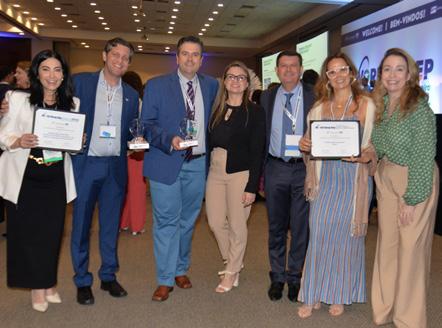

3,102 attendees from 73 countries
23 Courses
115 Symposia
14 Keynotes
1,121 Abstracts
worldsleepcongress.com
of
300+ Hours
International Scientific Content


The Potential of Consumer Sleep Trackers
The Technological Challenges to Overcome
by Jessica Thomas, MPH
In today's busy world, where hustle and bustle are often prioritized, sleep is usually overlooked. However, people are beginning to realize that getting quality sleep is one of the most essential components of living a healthy life. As a result, there is a growing interest in consumer sleep technology.
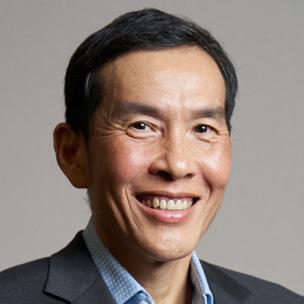
During the 2023 World Sleep congress, Michael Chee, MBBS, an eminent sleep scientist from the Centre for Sleep and Cognition at the National University of Singapore, delivered a keynote presentation titled Consumer Sleep Tech and Sleep Transformation. In this article, we highlight some of the exciting breakthroughs in sleep science and sleep tech presented during the congress.
The Evolution Of Sleep Technology
Sleep technology, specifically brain wave recordings and activity trackers, have existed for almost a century, but consumers were not always familiar with these tools. Due to their cost and the need for trained professionals to collect and interpret the data, they just were not practical for everyday people. Today, though, wearable sleep technology has evolved to be accessible to almost everyone.
With the introduction of devices like Jawbone and FitBit around 2010, consumers suddenly saw sleep trackers as nifty gadgets. Thanks to new functions like multiple sensors, realtime data collection, Internet data storage, and understandable displays, sleep technology has become more attractive.
8 | Volume 5, Issue 1 | World Sleep Congress Issue
Article features speaker from the World Sleep congress


“With the sustained and growing interest in sleep for wellbeing and health, sleep trackers are only going to improve with time.”
Since then, and especially in the last three to five years, there has been a significant shift to seeing these devices as key public health tools that provide important information.
In fact, one of the most critical factors driving this is a growing understanding that sleep is a key driver of health and wellness. With this newfound information, the sleep tracker market has shown at least a 6% annual growth over the last decade, thus leading to further research and advancements in sleep technology tools.
Different Devices for Different Consumers
From the consumer perspective, it is easy to assume that all sleep technology is the same. However, this is far from true. There are different tools, and each serves a different purpose. Most sleep trackers fall under three broad categories that we will go over below: brain wave or EEG (electroencephaplography) trackers, non-EEG wearables, and nearables.
EEG Trackers
Devices like headbands and in ear EEG buds can provide highly accurate results but require trained experts to interpret the information, which at present, is not available to most consumers. These are primarily used in clinical trials or research settings.
Non-EEG Wearables
The most widely used consumer sleep technology is non-EEG wearables. These can be wrist worn, like Fitbit and Apple Watch, worn on the finger like the Oura Ring or on the arm like Whoop. These devices are most often used to monitor physical activity like steps. Sleep data while important, is often not the top priority, some companies make sleep their product focus.
Non-EEG wearables can be divided into two broad categories: well-validated and massmarket devices. Well-validated devices generate more accurate results.
9 | healthiersleepmag.com Consumer Sleep Trackers continued on page 10 >
Michael Chee presenting at World Sleep 2023.
Consumer Sleep Trackers continued from page 9
Nearables
Finally, there are nearables. These are devices placed near where a person is sleeping, such as a nightstand or under a mattress. These tools harness heartbeat related, movement-generated electrical signals or pulsed radio waves to detect breathing related movement order to infer sleep.
Which Consumer Sleep Technology Is Better?
The "correct device" depends on the use or case Chee pointed out. The sleep staging accuracy of EEG trackers is important for clinical trial use and for evaluating sleep when it is more disordered. However, in most cases, the affordability of a good quality non-EEG wearable makes them well suited for healthy people who are keen on improving or maintaining good sleep habits. They are also well-suited for large scale population health studies that collect longitudinal data over time. Chee cautioned that while some cheaper devices may superficially resemble the well-validated, they are not sufficiently accurate and are at best good for reminding one to go to bed regularly and on time.
Sleep Scientists Are Not Widely Recognized
Despite a surge in understanding that sleep is essential for good health, many people do not know about the findings of sleep scientists. In fact, many individuals are unaware that there is even a profession of sleep scientists. Most people today rely on influencers more than scientists to shape what trackables they wear and how they approach sleep, which can be problematic.
Even when people do look to sleep scientists, consumers may emphasize different things than scientists. For example, Chee explains that many average users are focused on sleep stages. They want their trackable to display these numbers clearly. Scientists consider duration, timing and regularity as important objective measures that can be modified through lifestyle changes, but they are less focused on sleep stages because these are firstly, less accurately measured on consumer devices, and secondly, sleep state
“We lived through the era of how smartphone cameras have transformed photography, and I think sleep trackers combined with allied technologies are going to shake up sleep in a similar way.”
duration is not easily modified, and may not reflect the most important components of sleep. Looking at deep sleep scores may cause unnecessary stress without attendant benefits.
Is Sleep Technology Accurate?
Naturally, consumers may have many questions about sleep technology and its ability to provide accurate data. One challenge with accuracy is related mainly to quietly awake from being asleep. A device may assume that someone who isn't tossing and turning to be asleep. This can lead to an overestimation of nightly sleep. Also, accuracy may go down for older users and people with generally poor sleep quality.
Cultural And Demographic Differences In Sleep
Cultural and socioeconomic factors also influence sleep. For instance, Chee noted that Asians sleep less than Europeans and those living in Australia or New Zealand. Several factors help explain this sleep discrepancy, but a higher number of work hours and world culture may be significant factors that have previously been overlooked.
Some groups of individuals are less likely to wear their sleep-tracking devices regularly. For example, African American and lower-income consumers tend to be less inclined to track their sleep. However, these groups also historically have the most marked sleep challenges.
Based on this, Chee argues that monitoring sleep, while useful, by itself is not enough. Instead, he states that it's essential to look for societal barriers that negatively impact sleep. Once these barriers are identified, concrete action should be undertaken to shake up the sleep status quo.
10 | Volume 5, Issue 1 | World Sleep Congress Issue
Sleep Technology: A Growing Public Health Tool
The best news is that both the average person and scientists increasingly understand the importance of sleep in driving individual and public health. Data underscores this. However, this data needs to be interpreted in the context of social and cultural factors as well. This is why collecting and integrating data from multiple streams is important. This data should then be analyzed together from a variety of perspectives to yield insights not apparent from considering each channel of information by itself – the whole being more than merely the sum of its parts. Following this, well-thought-out steps
should be taken to break down systemic hurdles that interfere with sleep.
While this may take significant effort, the goal of having a healthy and well-rested population is well worth it.
Jessica Thomas is a public health professional, health and wellness writer and entrepreneur. She enjoys learning about and educating others on Healthy living and observing how technology is changing the healthcare space.
Bedtime Reads
Looking to learn even more? Each issue, we highlight a book about sleep.
Why We Should Sleep Smarter: The Scientific Blueprint to Optimize Your Energy Levels and Supercharge Your Day
by Matthew Reed
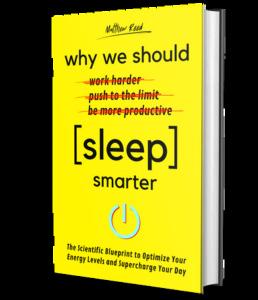
Across the world, millions of people struggle to stay awake, energized, and motivated throughout the day due to poor quality sleep. And for good reason! Everywhere you look, from gadgets to our own intrusive thoughts, distractions abound. And it keeps us from getting the rejuvenating shut eye we need in order to work at our 100% in our day to day.
This insightful guide not only takes a deep dive into the science behind sleep and debunks common myths about it, it also uncovers the factors that affect your sleep patterns and gives you 13 practical tools to deal with sleep challenges, such as jet lag, shift work, and adapting to life changes like parenthood.
11 | healthiersleepmag.com
Clinician as Advocate
Five Questions with Dr. Lourdes M. DelRosso
Lourdes DelRosso, MD, PhD is a Professor of Family and Community Medicine at University of California San Fransisco, co-chairs World Sleep Day, is the Director of World Sleep Academy, and chairs the Obstructive Sleep Apnea Public Awareness Committee of the American Academy of Sleep Medicine. She is active in research, clinical care and education in the field of pediatric sleep medicine with a focus on restless sleep and restless legs syndrome.
How many years have you been in the field of sleep?
13 years. Before I specialized in sleep medicine, I worked seven years as a family physician and five years as a medical technologist.
What led you to work in sleep medicine?
As a family physician, I soon became aware of the importance of sleep in the overall health of my patients. I realized that I did not have enough training to adequately diagnose and treat sleep disorders in my patients, so I decided to specialize in sleep medicine. Sleep medicine is a fascinating, multidisciplinary field, which is still relatively young, with a lot more to learn, research and work to do to educate the world on the importance of healthy sleep.
Why is patient advocacy important to you?
Patient advocacy is important because it supports and empowers patients to improve their sleep health and therefore improve their overall health and quality of life. By educating the public and bringing awareness about the importance of sleep and the connection between sleep and health, we will raise awareness about sleep disorders and their impact, ultimately promoting access to quality sleep care for all.
Patient advocacy in sleep medicine is also important because it allows us to work with other health care professionals (nurses, psychologists, therapists, students), hospital administrators, policymakers, researchers, and other stakeholders to advance sleep care and enhance sleep health.
Another key aspect in sleep medicine is that we underestimate the amazing impact that we can have. By improving sleep, we can help improve the lives of millions of people, as well as prevent or reduce the risk of chronic diseases, accidents, and other negative outcomes associated with insufficient or disrupted sleep.
What is one important thing you want people to know about sleep education?
It is crucial that everyone understands the incredible benefits of sleep for our health in general. When we take this concept to heart, we will want to prioritize sleep as a vital component of our well-being. Healthy sleep promotes healthy brain, development, immune system, cardiovascular system, memory, emotion, essentially every aspect of our health. Prioritizing sleep will also make us aware of the terrible consequences of sleep deprivation such as accidents, poor academic and work performance, chronic diseases, and poor decision making.
What are you most excited about?
Small interventions that improve sleep make tremendous differences in people’s lives. When we treat restless legs syndrome, people sleep better, and their life changes. When we diagnose and treat obstructive apnea, lives are changed. That is what I am most excited about, seeing lives change when people sleep better.
12 | Volume 5, Issue 1 | World Sleep Congress Issue
Harmony Biosciences is the sponsor of this ‘Clinician as Advocate’ article.
“The role of a sleep advocate is to also inspire others to become sleep advocates. Whether you are a health professional or a patient, share your story, be passionate about sleep, and join our efforts to promote healthy sleep to every corner of the world."

13 | healthiersleepmag.com
Photo credit: Cary Edmondson
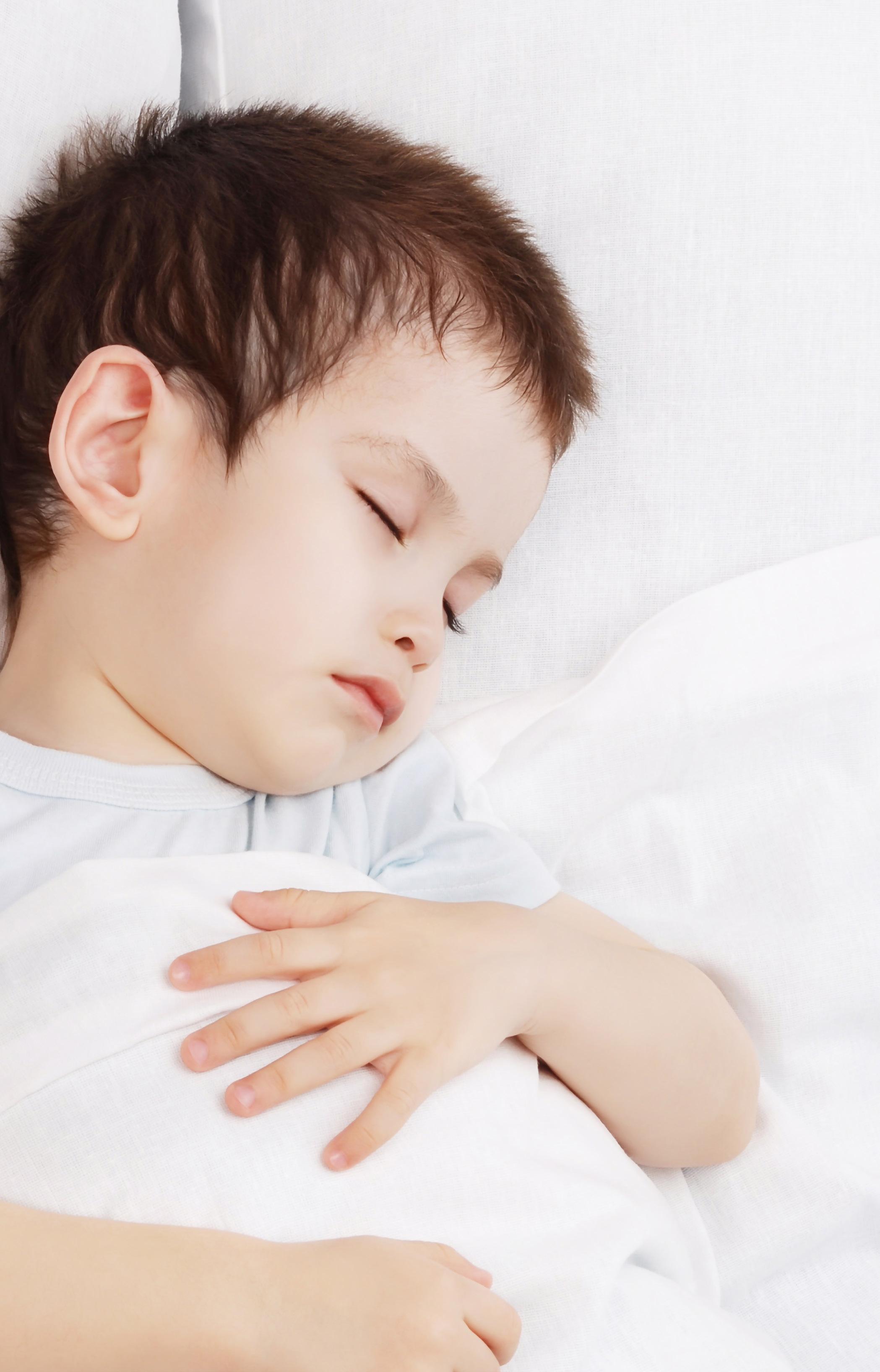
Sleep and the Developing Child Brain
What You Need to Know
By Candace Kastanis
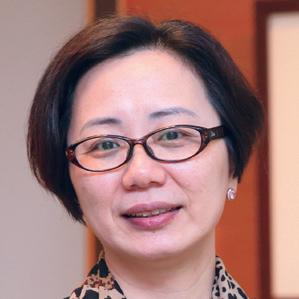
The medical community has long recognized that the relationship between sleep and the developing brain in young infants and children is important. A greater understanding of sleep and the developing brain is still a work in progress because a lot of research focuses on adults. However, Fan Jiang, MD, PhD, who practices at Shanghai Children’s Medical Center at the Shanghai Jiao Tong University School of Medicine, has collected a healthy body of research investigating how sleep impacts the development in infants and young children.
Dr. Jiang's evidence-based discoveries are capturing a great deal of attention among early childhood experts. Her findings suggest that quality sleep in infants and young children directly impacts mental and behavioral health factors. Studies show that 90% of a child’s brain development occurs before the age of five, and that quality sleep assists the future stages of many critical areas of development.
14 | Volume 5, Issue 1 | World Sleep Congress Issue Article features speaker from the World Sleep congress
Consequently, early childhood development experts are looking closely at future research opportunities to help parents and caregivers develop proactive sleep regimens in their children to promote better outcomes later in life.
Studies show that 90% of a child’s brain development occurs before the age of five, and that quality sleep assists the future stages of many critical areas of development.
We know that a baby’s brain is flexible – meaning that the baby's brain is always responding to and learning from cues in their environment. A good example might be crying to indicate hunger, followed by gaining access to breast feeding. Another example is responding to touch and sound which may be seen in subtle facial expressions or reaching for a parent.
Sleep duration and quality influence brain development in infants. The two main stages of sleep are REM sleep and non-REM sleep or (NREM). REM is an acronym for rapid eye movement. In NREM, the body functions slow down dramatically and the body temperature

drops signaling the body is about to experience deep relaxation, slowed breathing, and enter the deep sleep stage or REM sleep.
The REM stage of sleep is where dreaming occurs. It is characterized by rapid eye movement, bursts of brain activity enhancing connectivity within the central nervous system where many important body functions originate, such as: language, emotional output, behavior, and learning.
Clinical observation studies show that poor sleep may pose a risk factor for language development in young children. You may be wondering what poor sleep in infants and young children may look like. Lack of quality sleep cycles are shown in frequent awakenings, disturbed sleep cycles, and/ or frequent interruptions preventing long durations of sleep.
Delveloping child brain continued on page 16 >


15 | healthiersleepmag.com
One million new neural connections are formed every second in the infant brain and sleep plays an important role in cognitive and psychosocial development in early life.

Napping is shown to benefit memory in infants as young as 6 months old. Napping is essential for infants and young children. Even shorter nap durations lasting only 30 minutes, researchers find, allow the brain to collect and organize crucial bits of information. Napping allows babies to form cognitive functions such as generalizations (recognizing similarities in people and objects) and the ability to respond to them in a logical manner.
Poor sleep quality in infants, toddlers, and young adults is linked to problems in mental health and emotional development. Dr. Jiang highlights through observational and long-term studies how disturbed sleep cycles can alter responses to real-world scenarios in adulthood. Early depressive episodes, the inability to selfregulate, and socially engage were prevalent in participants with known sleep disturbances in their early childhood.
Quality sleep patterns are linked to greater creativity and may cultivate novel insights. Many first-hand accountings detail how sudden breakthroughs and profound points of knowledge
were realized during the stages associated with deep sleep. Individuals would awaken to find that their dreams unlocked graphic visualizations and solutions to certain problems areas of their lives. The sleep phenomenon of waking early during the night with bouts of insight is experienced by many.
Though there is much to conclude from existing research, we need to gather more definitive evidence about the cause and effect of sleep in young children. Dr. Jiang points out how overcoming certain challenges may be required, as designing a device that more effectively images the brain activity in infants and young children. She also urges the scientific community to develop more clinical studies in this sector to foster a greater understanding of the causes related to inadequate sleep and what it could mean in the long term. The answers to these riddles may hold the keys to preventing degenerative brain functions like dementia.
Candace Kastanis is a freelance health and scientific writer, specializing in health advocacy, rare disease, health equity, translational and integrative medicine.
16 | Volume 5, Issue 1 | World Sleep Congress Issue
Delveloping child brain continued from page 15 Subscribe to Healthier Sleep Subscribe for free online at healthiersleepmag.com Don't Miss An Issue!
Dr. Jiang presenting at World Sleep 2023 in Rio de Janeiro, Brazil.
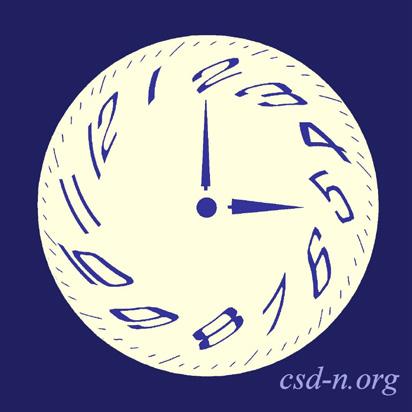
CCircadian Sleep Disorders Network
Advocating for People with Misaligned Body Clocks
ircadian Sleep Disorders Network (CSDN) is an independent nonprofit organization dedicated to improving the lives of people with chronic circadian sleep rhythm disorders.
Circadian sleep disorders are neurological disorders in which the sleep-wake cycle is out of sync with the day-night cycle. Common disorders are those who are extreme night owls or morning larks, or a very rare condition from a brain clock that cycles slightly longer than 24 hours. This may cause someone to cycle “round the clock” over about a month. Circadian sleep disorders can affect anyone, but they are common among people who are blind.
Circadian sleep disorders often disrupt work, school, and parenting. Abnormal circadian rhythms impact metabolism, heart, and brain function.
As patients, we struggle because many doctors are not familiar with circadian sleep rhythm disorders. And even once we get a diagnosis, many people do not believe these disorders or how serious and limiting they are.
– Peter Mansbach, PhD President of the Circadian Sleep Disorders Network
CSDN spreads information about the disorders to foster understanding and scheduling accommodations.
For people living with circadian sleep rhythm disorders, attempting to live on a normal daytime schedule, in the absence of successful treatment, results in severe sleep deprivation, which can have serious health consequences.
The goals of the Circadian Sleep Disorders Network are to:
1.) Increase awareness within the medical community and among the general public.
2.) Provide emotional support and practical ideas for people living with these disorders.
3.) Inform patients and health care providers about treatment options.
4.) Encourage research into circadian rhythms.
5.) Advocate for accommodations in education and employment for people with circadian rhythm sleep disorders.
Possible symptoms of circadian rhythm sleep disorders include:
• Not being able to fall asleep at a typical bedtime, known as insomnia.
• Trouble waking up in the morning in time to go to work or school.
• Extreme daytime drowsiness.
• Trouble staying alert during the day.
If you have any of the above symptoms and think you may have circadian sleep disorders, there is hope, and treatments are available to help reset your clock.
For more information visit, csd-n.org
Patient Organization Highlight
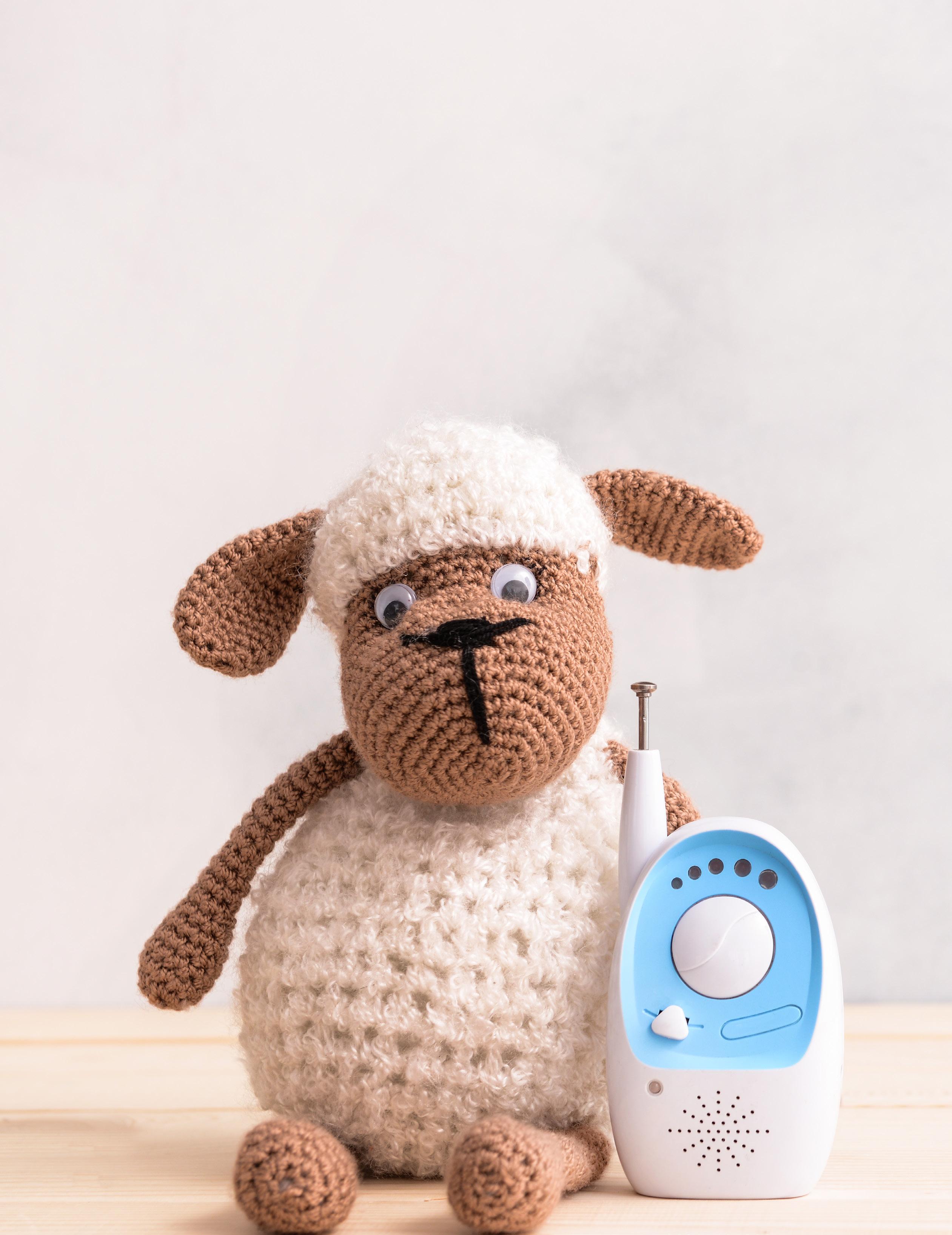
How to Choose a Baby Monitor
By Maristella Lucchini, PhD
Babies spend more than half of their day sleeping (at least that is the hope!), and many parents rely on baby monitors to keep an eye on their new bundle of joy. Lately, the market has exploded with an overwhelming number of options, and buying the perfect one for your family can be challenging. This article will evaluate the features of prominent devices to help you make the right choice.
18 | Volume 5, Issue 1 | World Sleep Congress Issue
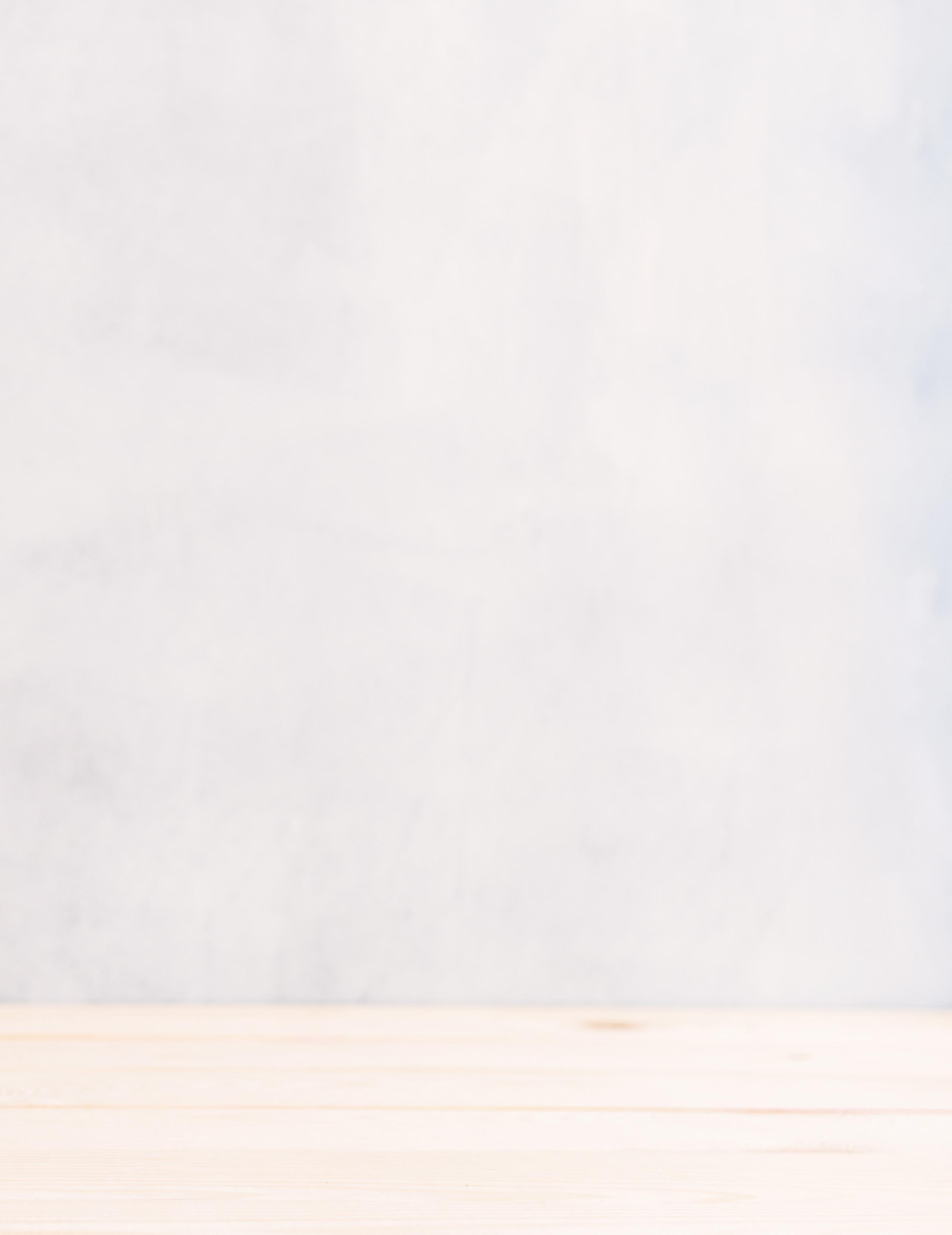
Audio-Only Monitors
An audio-only baby monitor is a no-frills, lowcost option, offering a reliable connection. However, these provide only basic audio information, which can be frustrating for parents when they cannot see what their baby is doing. They may also be confusing when a noisy background interferes, causing more work for an already overworked parent.
Non-Wifi Baby Monitors
More sophisticated alternatives are audiovideo non-Wifi (radio frequency) baby monitors. Radiofrequency or non-Wifi baby monitors can be appealing because they avoid Wifi connectivity and possible privacy issues.
However, keep in mind that radio-frequency monitors work only within a certain range. Always check the level of electromagnetic field exposure with a radio-frequency monitor since it’s a potential health hazard.
Another drawback is an inability to control or connect your phone or other caregivers to the monitor—limiting your ability to share and receive support.
Wifi-Enabled Video Monitors
Wifi-enabled smart baby monitors allow caregivers to check in on their child from literally anywhere. Having video information can be valuable in understanding a baby’s needs— sometimes they make noises in their sleep, or even wake up for a brief period of time and then settle back down. With video monitors, parents can better understand when it is necessary to attend to their child, avoiding unnecessary visits that might negatively affect the child's sleep.
These Wifi monitors also often include extra features, such as white noise or lullabies, two-way audio to talk to your baby, and room thermometers, which can help optimize and
monitor your baby’s sleep environment. The most advanced smart baby monitors can also provide parents summary statistics about their baby’s sleep habits and customized tips to help manage their children's sleep. Some monitors also provide information on breathing movement or oxygen saturation.
Baby monitors are not a one-size-fits-all product, and parental usage will vary depending on circumstances. Since baby monitors are meant to give parents peace of mind, everyone needs to assess which features are the best fit for them. Most importantly, baby monitors should not lower the attention in the implementation of safe sleep practice, which is the number one priority to protect your baby
Dr. Lucchini attended Politecnico di Milano in Italy where she obtained a PhD in Biomedical Engineering. Her research has focused on infant sleep and cardiorespiratory alterations in infants at risk for Sudden Infant Death Syndrome. She was selected for the American Academy of Sleep Medicine (AASM) Young Investigator Research Forum, and awarded the AASM Focused Projects Grant for Junior Investigators.

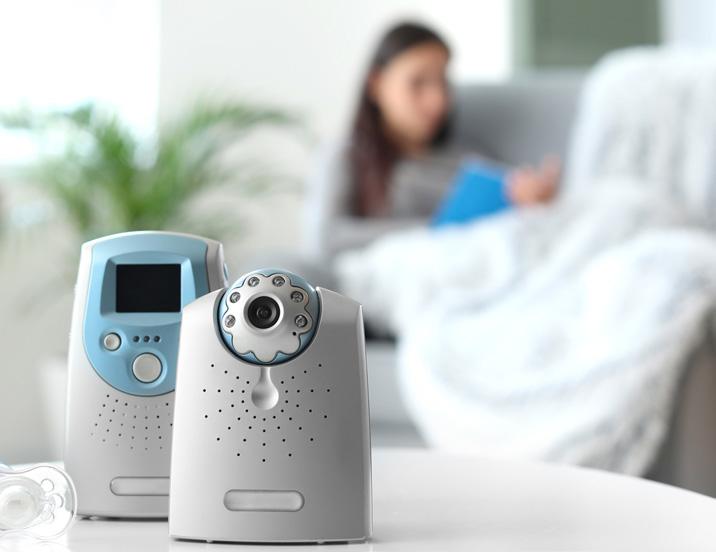

.............................................................................................
19 | healthiersleepmag.com
Know the Risk Factors for Adolescent Insomnia
By World Sleep Society Staff
Adolescence is an important time of life. As a body goes through puberty, there are a lot of physical, emotional, and mental changes.

Julio Fernandez-Mendoza, PhD has studied this phase of life to see how these changes affect the way we sleep. Many interesting findings about insomnia have been traced to adolescence.
By following a group of individuals from childhood (ages 5-12), through adolescence (1319), to young adulthood (20-30+), Dr. FernandezMendoza and his team were able to track risk factors for insomnia and when insomnia began for the participants, when it ended, and if it ended.
Risk Factors
It has been widely acknowledged that insomnia is more common among women than men. It was thought decades ago that perhaps women were more anxious or depressed, and that was why they had more insomnia. But findings from this research showed a dramatic increase in insomnia in girls around the age of 11 or 12, when pubertal development starts in women. This led researchers to believe that physical body changes and psychosocial changes at this critical point in life may put women at greater risk of insomnia. In fact, females were two times more likely to have insomnia symptoms through young adulthood than males.
Racial/ethnic and socioeconomic-related factors also play a role in insomnia. Black children, regardless of the socioeconomic level of their household, and non-Hispanic white children
from lower socioeconomic households were four and three times, respectively, more likely to have insomnia that started in childhood and persisted through adolescence compared to nonHispanic white children of higher socioeconomic households. Black children were also 7 times less likely to outgrow insomnia in the transition to adolescence. As these children were followed again at ages 20 to 32, researchers were able to identify that of those who reported insomnia as a child, more than half (56%) continued to have insomnia as an adolescent and about one third (31%) developed insomnia in adolescence, of which 43% continued to experience insomnia throughout young adulthood. In addition, about only one in four (26%) had symptoms in childhood but symptoms were gone by adolescence. Insomnia is not something that you necessarily outgrow.
Other risk factors include mental and physical health conditions. In fact, mental health conditions often go hand in hand with insomnia and put children at risk of developing persistent sleeplessness. Smoking can also be a risk factor for insomnia. Any use of tobacco can lead to trouble sleeping. Migraines, headaches, or concussions can also be a risk factor for insomnia in youth, particularly those participating in contact sports. If a child has some of these conditions, it is more likely that they will develop insomnia or that if they already have it, that it will become a persistent problem. Earlier action to correct physical or mental health in relation to sleeplessness is essential.
20 | Volume 5, Issue 1 | World Sleep Congress Issue
Article features speaker from the World Sleep congress
If your child has some of these conditions, it is more likely they will develop insomnia or that if they already have it, that sleeplessness will become a persistent problem. The earlier you act on mental and physical health conditions and on sleeplessness simultaneously, the better.
Signs of Insomnia in Adolesents
How do you know if your child has insomnia?
Some signs and symptoms of insomnia include difficulty initiating sleep, difficulty maintaining sleep, inability to shut off their mind at bedtime, feeling too alert at bedtime, daytime sleepiness or fatigue and attention or concentration problems. So, do not take your child’s report of inability to sleep loosely and simply tell them to go to bed as “at least they are resting.” Doing so is a mistake parents can make as lying in bed anxious or alert is what will fuel chronic sleeplessness. Ask your child what is going on or what is keeping them awake, as they may need to consult with a clinician.
What Can Be Done

Dr. Fernandez-Mendoza recommends the following three levels of action. Many people who experience childhood onset insomnia may experience symptoms for years, but there are effective treatments available. Policy and education are also critical to move forward.
3 2 1
First, public policy should reflect the importance of sleep like what has been done with physical activity, diet, and tobacco use. School start times could be adjusted to reflect the later circadian clock of adolescents. In addition, education on the importance of sleep and the critical role it plays should be part of the school curriculum for adolescents and their parents.
Second, clinicians need to be aware and willing to refer youth for help. When a parent expresses a concern that their child has difficulty sleeping, they should be referred to a sleep specialist. There are evidence-based behavioral treatments for insomnia that are effective and helpful.
Third, parents can look for signs and symptoms of insomnia and listen to a child who expresses that they are having trouble falling or staying asleep, then, seek help. For most children, sleeplessness will not just go away as they grow older
21 | healthiersleepmag.com
Dr. Fernandez-Mendoza talking with a delegate at World Sleep 2023.
Julio Fernandez-Mendoza, PhD is an Associate Professor of Psychiatry & Behavioral Health and the Director of the Behavioral Sleep Medicine Program at Penn State Sleep Research & Treatment Center, Penn State Health Milton S. Hershey Medical Center, Penn State University College of Medicine.
The BuZZZ about Sleep
Your Latest Buzzword is Crowdlearning
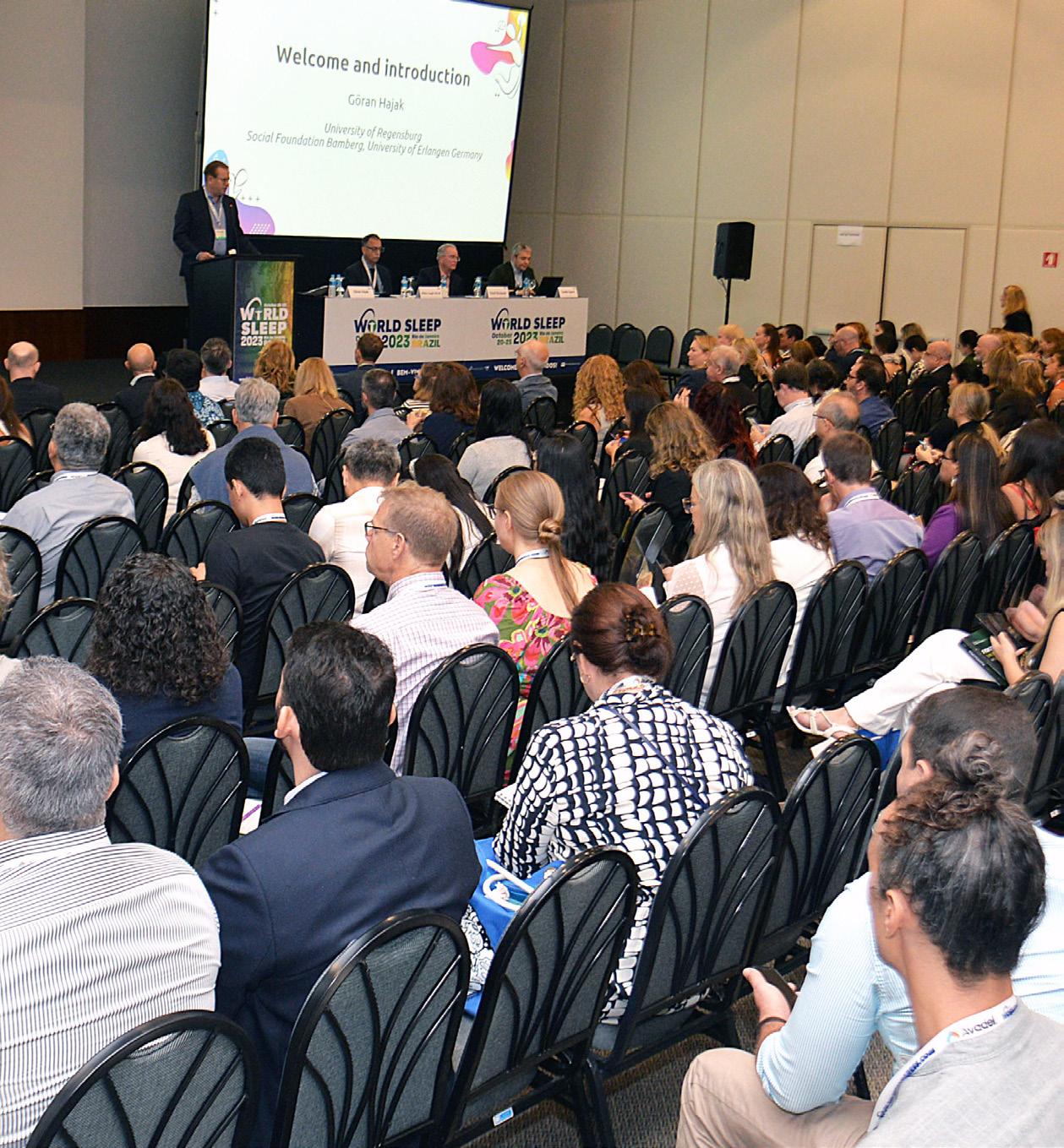
Crowdlearning is a way of learning that is based on sharing experience and knowledge in a group of people. It serves as a motivational platform for the transfer of information in education.
Crowdlearning can take place in a variety of ways, such as conference gatherings, online communities, and special interest groups to name a few. While crowdlearning has always occurred, the use of technology to communicate across time and distance has increased the prevalence and benefits of crowdlearning. It is now possible to easily collaborate with people from a wide variety of backgrounds, experiences, and expertise. These various viewpoints can paint a clearer picture for the learner to come to their own understanding of a topic.
Through this approach of crowdlearning, people gain not only knowledge on an individual level but also have an opportunity to practice their social skills, cognitive skills, and empower themselves and each other.
22 | Volume 5, Issue 1 | World Sleep Congress Issue Promotion of Sleep continued from page x
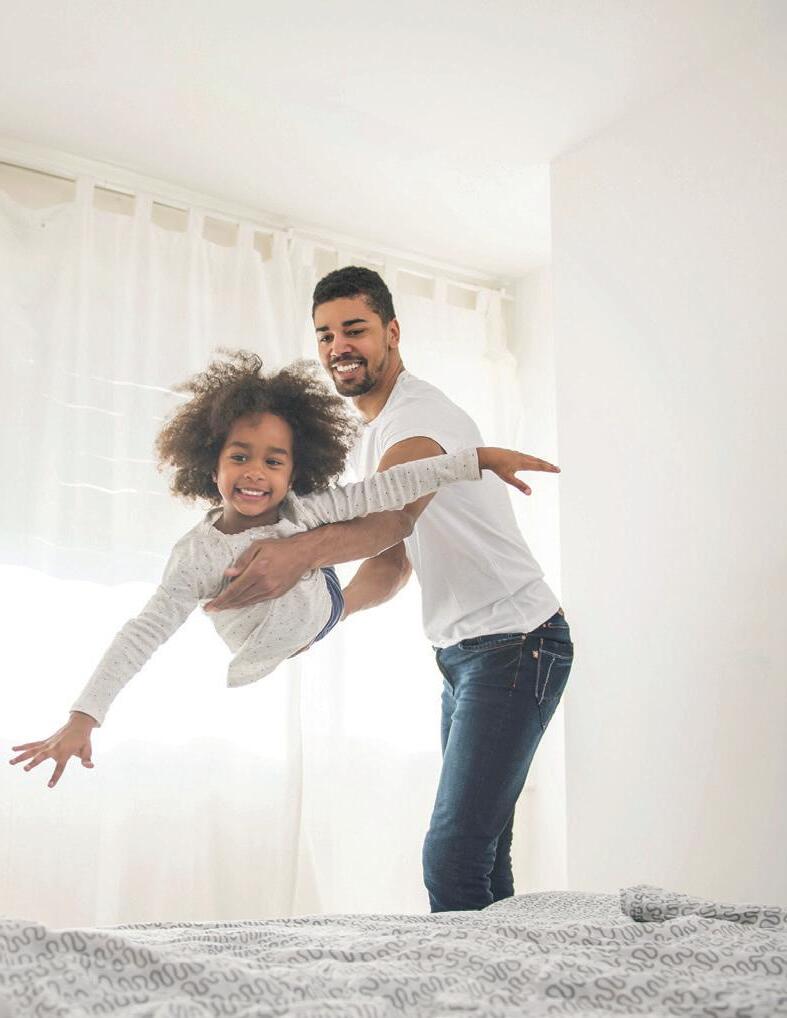

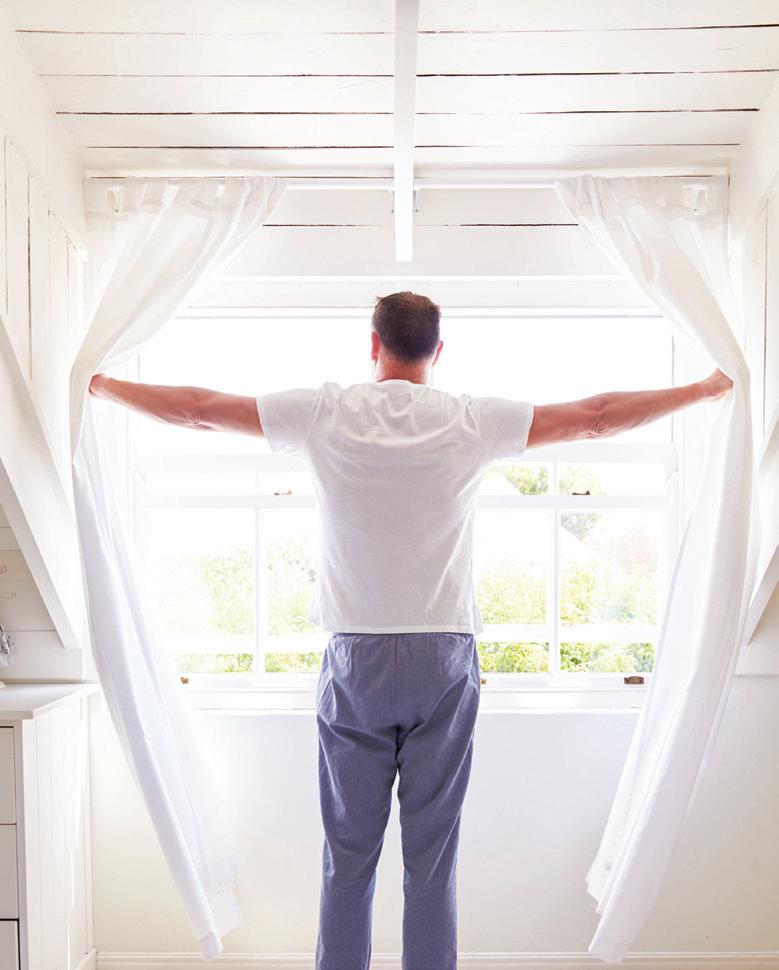

Healthier
World Sleep Society. World Sleep Society is a membership organization for professionals working in the field of sleep medicine and research with a mission to advance sleep health worldwide.
Contact Us
Sleep is published by
For more information, visit Healthiersleepmag.com For questions, contact healthiersleep@worldsleepsociety.org Healthier Sleep is a public awareness magazine that acts as a trusted source for information regarding sleep health, disorders, and research. The magazine is published four times per year and available for free online Issue Topics • Sleep Apnea • Healthy Sleep • Sleep Disorders • Daytime Sleepiness • Artificial Intelligence • Insomnia • Restless Legs Syndrome (RLS) Your Trusted Source for Improving Sleep In Every Issue Clinician as Advocate Bedtime Reads The BuZZZ About Sleep Ask the Sleep Experts Right Now in Sleep Science healthiersleepmag.com May/June2021|SleepDisordersIssue healthiersleepmag.com July/August 2021 | Insomnia Issue healthiersleepmag.com Winter 2022-23 Artificial Intelligence Issue Introduction to Artificial Intelligence Sleep Tracking Devices New Feature: Clinician as Advocate Five Questions with Dr. Azizi Seixas Better Sleep for All: Expanding Acccess to Sleep Health for Underserved and Diverse Populations

Sleep Deprivation in the Elderly
What Causes It and How to Remedy It
By World Sleep Society Staff
While sleep deprivation – or not getting enough sleep is common, there is a remarkable increase as we age. Sleep deprivation affects about 10 to 20 percent of individuals in the general population, but some studies have found that number increases as high as 69 percent among the elderly. That means almost seven out of 10 older adults cannot get the recommended six to nine hours of quality sleep! To make matters worse, not only is there a higher occurrence of sleep deprivation in older adults, but the harmful effects of sleep deprivation can be more damaging than to a young person.
Quality sleep will undeniably build resilience and wellness in your body and mind as you age. Consider the following causes and remedies along with your own experiences on your journey to healthier sleep.
Causes of Sleep Deprivation

Older individuals face unique sleep challenges, which can include:
• Reduced melatonin and weaker circadian rhythms
• Additional health issues (for example, arthritis, cardiovascular disease, diabetes)
• Increased incidence of primary sleep disorders such as obstructive sleep apnea, insomnia, and restless legs syndrome
• Increased use of medications which can disrupt typical sleep
Remedies for Sleep Deprivation

• Establish a consistent sleep schedule – go to bed at the same time every night.
• Avoid unscheduled naps and keep naps brief.
• Stay active during the day.
• Screen sleep quantity and quality as part of a routine clinical evaluation.
• Minimize or eliminate alcohol, caffeine and nicotine.
• Talk to your health care professional about any sleep-related issues you are experiencing.
24 | Volume 5, Issue 1 | World Sleep Congress Issue

Right Now in Sleep Science
Imaging the Sleeping Brain
The brain continues to work while we sleep, consolidating memories, "cleaning" itself, and maintaining our metabolism and other critical systems of our body.
Until recently much of how the brain works during sleep has been speculative. Dr. Laura Lewis, a scientist from MIT and Massachusetts General Hospital, has found a way to measure blood and fluid flow in the brain. By using EEG and fMRI, which measures oxygen levels in blood and watching the cerebrospinal fluid (CSF), Dr. Lewis has determined that our brains flush out fluid while we sleep. CSF flow pulsates with heartbeat and breathing, but what was discovered is that CSF flows at a much higher rate while we sleep, carrying with it any toxic proteins picked up during the day.
One example of this is "amyloid", a protein that has been linked to Alzheimer’s disease, and flows out at a much higher rate while sleeping. Lack of sleep can cause toxic proteins to build and in turn hamper the ability to think clearly and to sleep well.
So, if high CSF flow is good, can it be stimulated when people are awake? By the same process, using EEG and fMRI, it was determined that CSF flow does increase with brain stimulation. However, the increased rates were significantly less than when asleep. Sleep is the optimal state for clearance: neural activity slows and there is a change in respiratory and vascular oscillations which opens the way for cerebrospinal fluid flow.
25 | healthiersleepmag.com
Sleep-related Jerky Movements
By World Sleep Society Staff
Spasms, starts, jerks, jolts: there are many names for the sensation of “catching yourself” when falling asleep. This could be a sleep start or hypnic jerk. It is a very normal response as we prepare to sleep. However, in a small portion of the population, excessive body jerks while sleeping can cause sleep disorders.
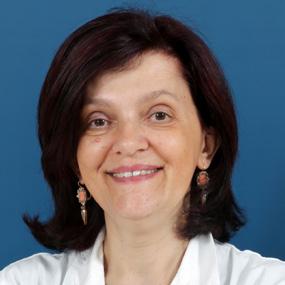
According to Frederica Provini, MD, PhD, Associate Professor in the Department of Biomedical and Neuromotor Science at the University of Bologna in Italy, different types of jerks could appear during the night not all with pathological relevance.
From very small twitches to a full body jolt, there is a wide range of sleep-related jerks: fragmentary hypnic myoclonus (small twitches of the small muscles of the hands or face), neck myoclonus (flexion or extension contraction of the muscles of the head), and sleep starts (brief simultaneous contraction of the muscles of the body). Because there are so many types, scientists have developed a way to define the site of origin and the pattern of muscles activation.
Electrophysiology is used to measure the pattern of activation and muscles involved with the jerks as well as the frequency and intensity of jerks while sleeping. For example, a sleep start or hypnic jerk may occur due to a sudden noise, or it may just happen for no apparent reason. The recordings look different for each type based on the origin of the jerk. Measurements reflect different muscles responses during the different types of jerks. In patients with neurodegenerative diseases, (e.g., Parkinson's Disease) many hypnic jerks are present every
night. When jerks occur frequently and late in the sleep cycle, it can prevent sleep, causing severe insomnia. This is the case of a rare condition named "propriospinal myoclonus", during which jerks appear only when the patient is relaxed, laying down, and ready to begin to sleep. Regarding this condition, the interesting question is: Why do symptoms disappear when patients are mentally awake or active?
Sleep starts or hypnic jerks are common occurrences and can be part of a healthy sleep. Occasionally jerks can be a sign of a sleep disorder, appearing also in the context of a more complex condition such as RBD (REM sleep behavior disorder). The intensity of the jerks and their frequency associated with their neurophysiological features can help the clinician to pose the correct diagnosis.

26 | Volume 5, Issue 1 | World Sleep Congress Issue
Dr. Provini presenting at World Sleep 2023 in Rio de Janeiro, Brazil.
Article features speaker from the World Sleep congress


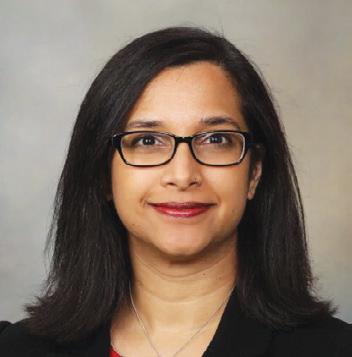
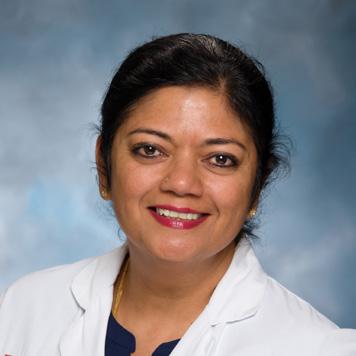

Ask the Sleep Experts
As answered by our issue reviewers
How do wearable sleep trackers work? Do they use Artificial Intelligence (AI)?
Dr. Cesari:
Typically, sleep trackers record movements and heart rate. The most advanced trackers are also able to record temperature, skin conductance and oxygen saturation. Algorithms are then used to map these signals to identify periods of wakefulness and sleep, and sometimes to even recognize sleep stages. The most novel technologies typically use artificial intelligence algorithms for this purpose.
Dr. Thomas:
With the capability of devices (trackers, watches) to collect pulse and breathing data, the analysis has become more sophisticated, integrating movement, heart rate and breathing. This type of analysis can detect deep sleep, dream sleep, and comes close to other forms of direct recording of sleep.
27 | healthiersleepmag.com
Maya Ramagopal, MD
Melissa C. Lipford, MD
Ask the experts continued on page 30 >
Robert J. Thomas, MD
Matteo Cesari, PhD
Ask the experts continued from page 29
Are wearable sleep trackers helpful and reliable to my doctor in diagnosing sleep disorders?
Dr. Ramagopal:
While sleep trackers offer valuable insights on sleep in the patient’s own environment, over a longer period, it is only 78% accurate in measuring sleep vs. wakefulness compared to sleep studies. The currently available sleep trackers are not substitutes for sleep studies.
Dr. Lipford:
Sleep tracker data can be a helpful tool in assessing overall sleep patterns, but the data is typically insufficient to make a diagnosis. If you struggle with getting good quality, restful sleep, a discussion with a healthcare professional is recommended (regardless of what your sleep tracker says!).
Dr. Cesari:
The use of sleep trackers as a supporting tool to diagnose sleep disorders is so far quite limited. Sleep trackers alone cannot diagnose sleep disorders. Their results should always be verified and interpreted by experienced sleep doctors.
Dr. Thomas:
Diagnosis of a sleep disorder based on a tracker is unlikely, but some patterns of activity can diagnose conditions such as circadian rhythm (sleep-wake timing) disorders, and insomnia. In the future, diagnosis of sleep disorders or rating the risk of sleep apnea is likely.
Are there devices that improve sleep with AI?
Dr. Thomas:
These are coming, with countless firms targeting insomnia, general health, mood and so on, all of which have important sleep components. Commercial Sleep Assistants are barely "AI" right now, but will become increasingly so, integrating age, gender, personal characteristics, sleep measurements, and habits such as exercise and alcohol, to provide flexible advice.
Passive data collected with Wi-Fi/radio frequency signals which bounce off the body can measure sleep and wake physiology and pathology. These can be small devices on the wall, just consider if you want someone watching your every breath.
Dr. Cesari:
However, large clinical validations of these technologies are limited, and I would recommend care when using these devices. In case of serious sleep problems, good sleep hygiene and a talk with a sleep doctor is always recommended.
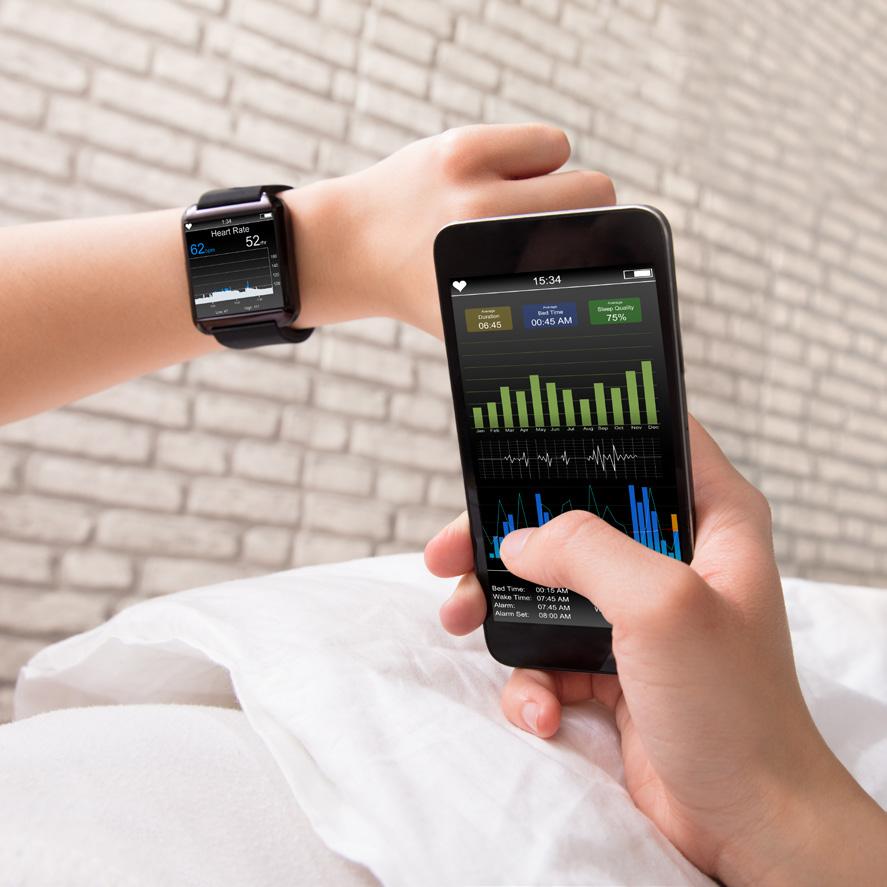
What are the pros and cons of wearable sleep devices?
Several devices claim to improve sleep with AI. Smart mattresses claim that they can improve sleep by adjusting temperature. Apps tracking sleep in babies provide the parents tips on how to adjust bedtimes and feeding schedules to improve babies’ sleep. Other wearable devices can also work as closed-loop systems, by reading the EEG and stimulating the brain to e.g., produce more slowwave sleep, which is thought to be related to the sensation of restfulness.
Dr. Lipford:
On the pro side sleep devices can help offer insight into sleep patterns. Using a sleep device may bring awareness of current sleep habits and allow the user to optimize their sleep patterns.
The cons are most of the technology has not been validated to provide a diagnosis. Also, wearing a device nightly can be uncomfortable for some, thus potentially negatively impacting sleep quality. Lastly, many wearable sleep devices rely on
28 | Volume 5, Issue 1 | World Sleep Congress Issue
actigraphy (movement data) to distinguish between sleep and wake. These devices may misinterpret a person who is lying in bed awake (but is keeping still), as being asleep, due to lack of movement.
Dr. Thomas:
The pros of wearable devices are ease of data collection and multiple nights of data. There is natural night-to-night variability even in health, often more so in disease, which cannot be captured by one night of detailed assessment, as is typical now. The main cons are that the data is less detailed. You must believe what you get and accept the risks. The analyses also change regularly, adding another layer of complexity.
Dr. Cesari:
Compared to in-lab polysomnography, the main advantages of wearable sleep devices are that they are comfortable to wear, do not require specialized personnel for their use, are cheap, and monitor sleep for long periods of time. In-lab polysomnography is continuously monitored, and artifacts, or extraneous signals, can be corrected by specialized personnel. This is not the case for wearable sensors. Furthermore, wearable sleep devices do not collect all signals typically recorded
in a polysomnography, which might be useful for the diagnosis of some sleep disorders.
What new technology are you excited about?
Dr. Cesari:
I am excited about the technologies that can record electroencephalography (EEG) in a non-invasive way, such as in-ear sensors or electrode tattoos. I believe that these technologies will make sleep tracking more precise and may lead to transitioning from one-night in-lab polysomnography to more night at home reliable sleep recordings.
Dr. Thomas: Smart patches that can measure substances under the skin to approximate blood levels, provided they prove to be accurate.
Dr. Ramagopal: Sleep studies can be challenging in many children, especially for those with neurodevelopmental disorders. Some children do not tolerate the sensors, and a new environment adds to the anxiety. Sleep studies can be unsuccessful in those cases. I am excited that sleep trackers can be used to get long term information which can be useful in developing a treatment plan to help the patient and family.
Meet the Sleep Experts

Matteo Cesari, PhD is a Postdoc Fellow at the Sleep Disorders Unit in the Department of Neurology at the Medical University of Innsbruck in Austria. He has been in the sleep medicine field for 7 years.

Melissa C. Lipford, MD is a Neurologist and Sleep Medicine Specialist, and Associate Director for Research at the Center for Sleep Medicine in the Division of Pulmonary Critical Care and Department of Neurology at Mayo Clinic in Rochester, Minnesota. She has been working in sleep medicine for 14 years.

Maya Ramagopal, MD is a Pulmonologist and Sleep Medicine Specialist at the Robert Wood Johnson University Hospital in New Brunswick, New Jersey. She is the Medical Director of the Pediatric Program at the Comprehensive Sleep Disorders Center and Professor at Rutgers Robert Wood Johnson Medical School. She has been in sleep medicine for 15 years.
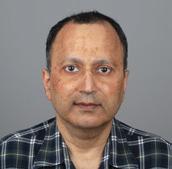
Robert J. Thomas, MD is a Professor of Medicine at Harvard Medical School and is associated with Beth Israel Deaconess Medical Center, Boston, Massachusetts. He has been in the field of sleep medicine for 28 years.
29 | healthiersleepmag.com Have a question for the sleep experts? Submit questions to healthiersleep@worldsleepsociety.org Questions are selected based on space and applicability.

World Sleep Day is an annual public awareness day that celebrates healthy sleep. World Sleep Society members around the world organize local and regional activities that promote the year’s theme and raise awareness of sleep health.
Delegates in countries around the world participate in World Sleep Day each year. Since the first World Sleep Day in 2008 there have been 92 participating countries and 2,500+ activities organized.
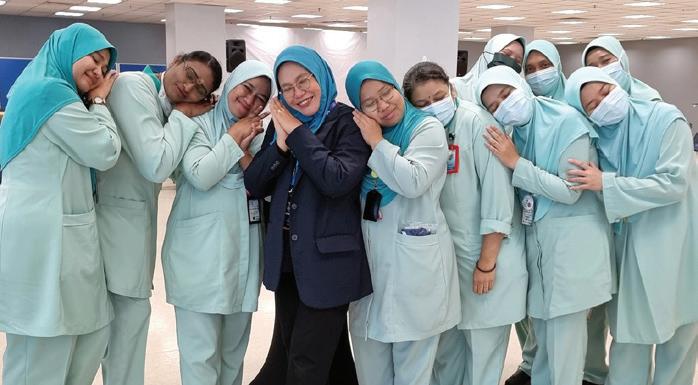
The next World Sleep Day is Friday, March 15, 2024
Sign up for updates at worldsleepday.org to follow the latest developments regarding the annual theme and activities.
19th Street NW, Suite 109
Healthier Sleep Magazine 3270
Rochester, MN 55901 USA
Save The Date
facebook.com/wasmf twitter.com/_WorldSleep
About Global Event
worldsleepday.org



































































